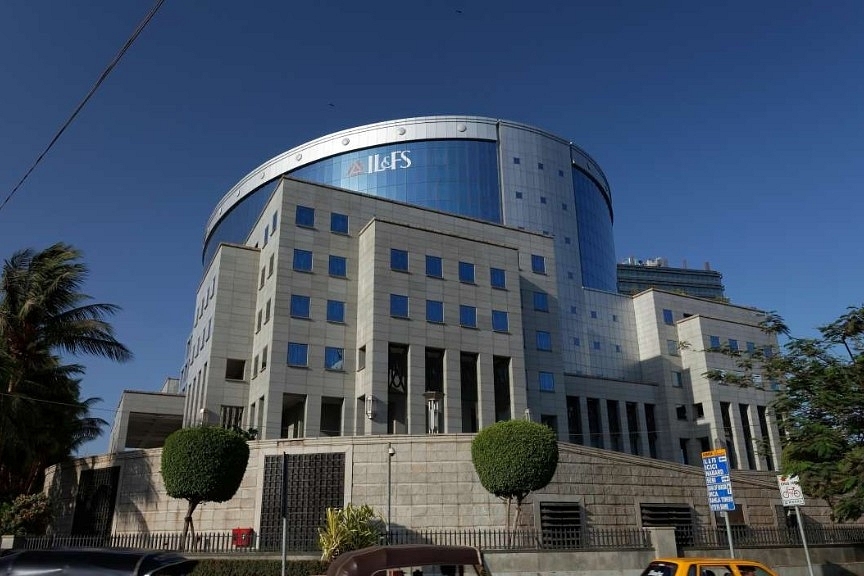Business
IL&FS-Triggered Meltdown Shows Some NBFCs May Have Been ‘Swimming Naked’
- The regulator and rating agencies cannot avoid their share of the blame at IL&FS.
- The IL&FS default and the crisis of confidence in NBFCs could have been foretold.
- That is why we need a spring cleaning here, not patchwork remedies.

The IL&FS crisis: the regulatory lifeguard was found asleep at his post.
Warren Buffett, the iconic investor of Berkshire Hathaway, once famously said that it is “only when the tide goes out do you discover who's been swimming naked”.
Last week’s near-meltdown in India’s stock markets after Infrastructure Leasing & Financial Services (IL&FS) defaulted on a Rs 1,000 crore debt raised from the Small Industries Development bank of India (SIDBI), followed by another default on a letter of credit to IDBI Bank, showed that companies in the Indian financial system may have been swimming naked. The regulatory lifeguard was found asleep at his post.
Barely had the IL&FS crisis broken cover, and other non-bank financial companies, including DFHL and Indiabulls, faced investor skittishness over fears that they too could face liquidity pressures, with the shares of the former crashing more than 40 per cent in one day. This led to all banking and financial stocks, including blue chips, facing selling pressures, threatening to topple the entire market.
Talk about India’s “Lehman moment” forced the Reserve Bank of India (RBI) and market regulator Securities and Exchange Board of India (SEBI) to move in quickly to stem the rot. The two regulators put out a joint statement on Sunday (23 September) stating that they are “closely monitoring recent developments in financial markets and are ready to take appropriate actions, if necessary”.
The statement was needed, but one cannot stop with that. What is needed is a root-and-branch reappraisal of financial sector regulations that permit banks and non-banks to finance long-gestation projects in infrastructure with short-term funds. Half the worries in the banking sector, and now the non-bank financial sector, including IL&FS stem from this one fact.
The obvious needs restating: it is okay to finance long-term investments with short-term liabilities at the margin, but this cannot become the norm. Long-term investments must be financed either by larger dollops of equity or matching long-term liabilities and extra-long lines of credit.
In Finance Minister Arun Jaitley’s first budget, an innovative idea was unveiled to allow financial institutions to raise long-term bonds that will not attract statutory liquidity ratio (SLR) stipulations. This meant a significant chunk of the funds raised do not have to be locked up in meeting regulatory requirements that earn very little. However, there is no evidence that this route has been a source of fresh infrastructure funding.
This leads us to another possibility: that banks ought not to be lending to areas like infrastructure where they have very little expertise and understanding of the risks involved. Unfortunately, given the huge requirement of funds for infrastructure, both the government and the regulators have been nudging banks to lend to infrastructure, and a large part of the current problems of bad loans relate to such projects, including the ongoing NPA crisis in the power sector.
In 2014, the RBI allowed another form of asset-liability mismatch under the so-called 5:25 scheme, where banks were allowed to finance long-gestation infrastructure projects by tweaking the loan terms every five years. This could have been done earlier too, when under takeout financing banks could lend for five years with the understanding that after five years the loan will be off their books. But this did not work. Hence 5:25, which is essentially about financing infrastructure using bank funds in areas they are not comfortable with.
IL&FS actually should not have been a candidate for such a problem, for, as its name suggests, it was actually in the infrastructure financing business with a good understanding of the risks and rewards in it. Clearly, one must fault bad financial and risk management for its current defaults.
The regulator and rating agencies cannot avoid their share of the blame at IL&FS. The IL&FS default and the crisis of confidence in NBFCs could have been foretold. We need a spring cleaning here, not patchwork remedies.
Introducing ElectionsHQ + 50 Ground Reports Project
The 2024 elections might seem easy to guess, but there are some important questions that shouldn't be missed.
Do freebies still sway voters? Do people prioritise infrastructure when voting? How will Punjab vote?
The answers to these questions provide great insights into where we, as a country, are headed in the years to come.
Swarajya is starting a project with an aim to do 50 solid ground stories and a smart commentary service on WhatsApp, a one-of-a-kind. We'd love your support during this election season.
Click below to contribute.
Latest